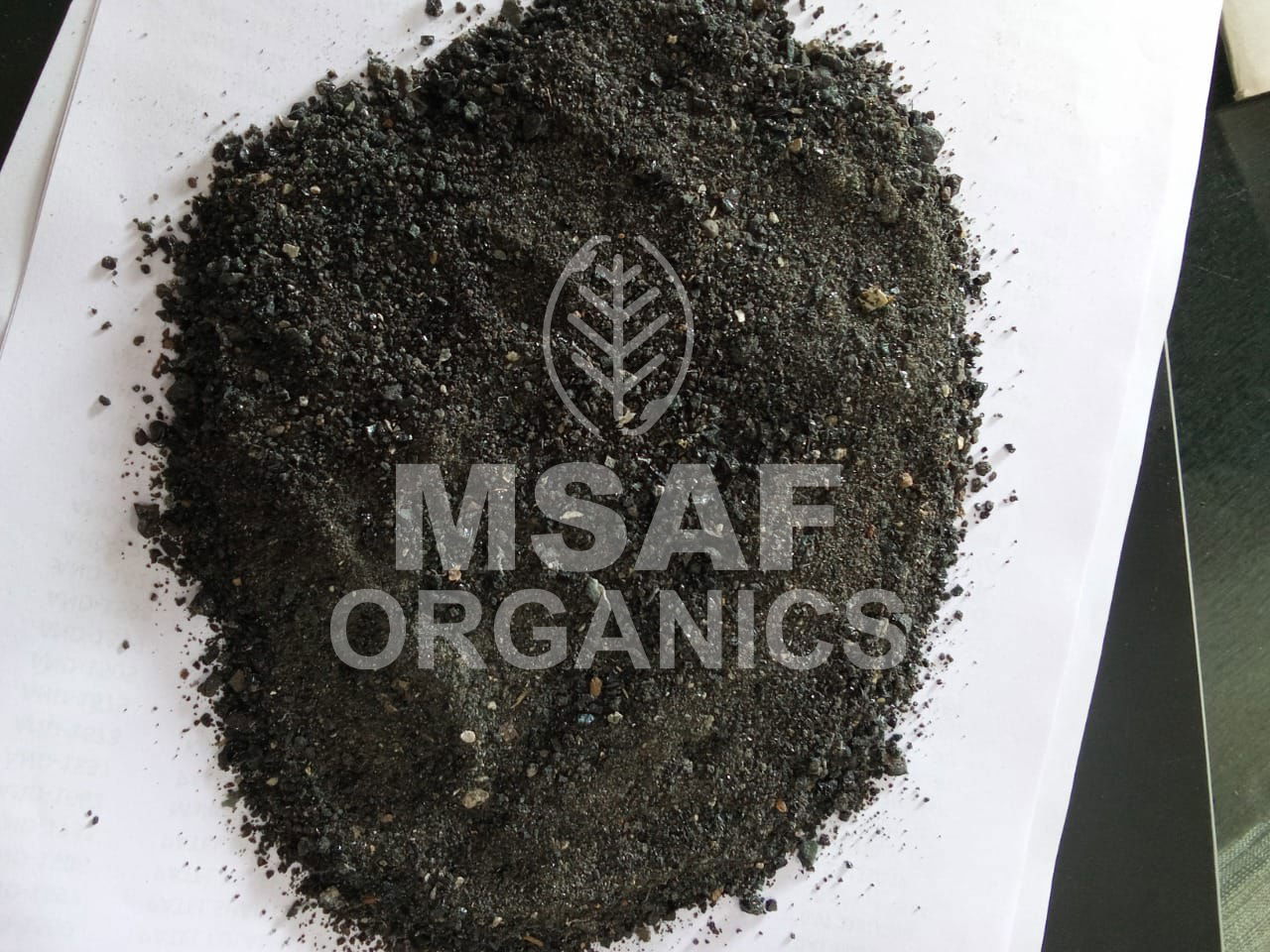LEATHER MEAL

Product Description:
Leather meal is a byproduct of the leather industry produced from the rendering of animal hides and skins. It is typically obtained by grinding and processing leather scraps and trimmings into a fine meal suitable for agricultural use. Leather meal is valued for its high protein content and slow-release nitrogen, making it a beneficial soil amendment and fertilizer for various crops and plants.
Compositions:
| Parameters | Specifications |
| Protein Content | Typically ranges from 50% to 70% |
| Nitrogen Content | Generally, between 8% to 10% |
| Moisture | 10 to 12% |
| S/Silica | 5 to 7% |
| Color | Dark brown to black |
Benefits for Agriculture :
- Slow-Release Nitrogen: Leather meal provides a gradual and sustained release of nitrogen, supporting prolonged plant growth and development without causing nitrogen leaching or runoff.
- Soil Conditioning: It improves soil structure, aeration, and water retention capacity, enhancing nutrient availability and root growth.
- Nutrient Supply: Leather meal supplies essential nutrients, including nitrogen, phosphorus, and trace elements, promoting healthy plant growth, flowering, and fruiting.
- Organic Matter: It adds organic matter to the soil, enriching soil fertility, microbial activity, and beneficial soil organisms.
- pH Regulation: Leather meal helps to buffer soil pH and maintain optimal soil acidity or alkalinity for plant growth and nutrient uptake.


